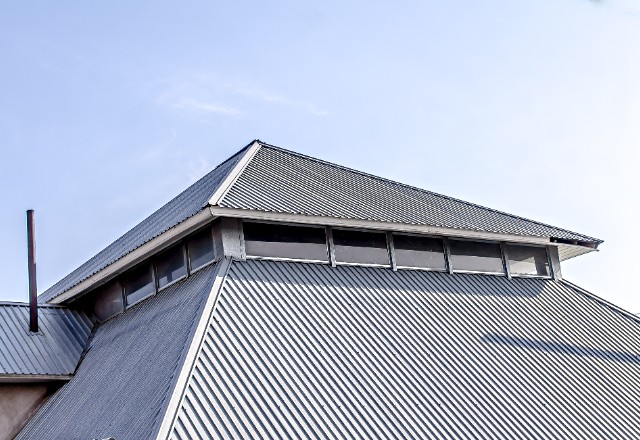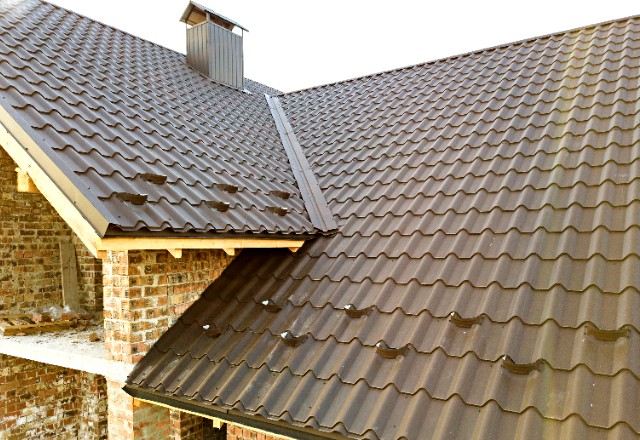When considering a metal roof for your home or building, one of the most important factors to understand is the gauge of the metal. Many people ask, “What gauge is metal roofing?” as it plays a crucial role in the durability, longevity, and overall performance of your roof. In this comprehensive guide, we’ll explore what metal roofing gauge means, common gauges used, and factors to consider when selecting the right gauge for your project.
What is Metal Roofing Gauge?
Metal roofing gauge is a measurement that indicates the thickness of the metal used in your roof. Gauge is determined by the weight of the metal per square foot, with a lower gauge number representing a thicker metal. For example, 24 gauge metal roofing is thicker than 29 gauge metal roofing.
It’s essential to understand that metal roofing gauge is not the same as the actual thickness of the metal, which is measured in inches or millimeters. However, the gauge provides a standardized way to compare the thickness and weight of different metal roofing options.
Common Metal Roofing Gauges
When exploring what gauge is metal roofing, you’ll typically encounter four common gauges:
Gauge | Thickness (inches) | Weight (lbs/sq. ft.) | Typical Applications |
29 | 0.0135 | 0.82 | Light-duty residential, sheds, garages |
26 | 0.0185 | 1.12 | Moderate-duty residential, small commercial |
24 | 0.0225 | 1.36 | Heavy-duty residential, commercial, industrial |
22 | 0.0275 | 1.67 | Extra heavy-duty commercial, industrial |
29 Gauge Metal Roofing
29 gauge metal roofing is the thinnest and most lightweight option, making it suitable for small-scale projects and tight budgets. While it may not offer the same level of durability as thicker gauges, it is still a reliable choice for structures that don’t require heavy-duty protection, such as garden sheds, small garages, or accessory buildings.
26 Gauge Metal Roofing
For homeowners seeking a step up in strength without breaking the bank, 26 gauge metal roofing provides a practical solution. This gauge strikes a balance between affordability and performance, offering increased resilience against the elements compared to 29 gauge. It is a popular choice for residential roofing projects and smaller commercial buildings.
24 Gauge Metal Roofing
When it comes to protecting your investment, 24 gauge metal roofing is a top contender. This heavy-duty option is designed to withstand the test of time, offering superior resistance against harsh weather conditions, impacts, and everyday wear and tear. It is an ideal choice for larger residential projects, commercial properties, and industrial facilities that demand a reliable, long-lasting roofing solution.
22 Gauge Metal Roofing
For projects that require the ultimate in strength and durability, 22 gauge metal roofing is the go-to choice. As the thickest gauge available, it provides unparalleled protection against extreme weather events, heavy impacts, and the most demanding environments. This gauge is commonly used in large-scale commercial and industrial applications where failure is not an option, ensuring a robust and resilient roofing system that can handle even the toughest challenges.

Factors to Consider When Choosing Metal Roofing Gauge
When deciding what gauge is metal roofing best for your project, consider the following factors:
When deciding what gauge is metal roofing best for your project, consider the following factors and their corresponding calculations:
Factor | Calculation |
Snow Load Capacity | – Calculate the expected snow load for your area based on historical data and building codes. – Use the following formula to determine the minimum required metal roofing gauge: – Minimum Gauge = (Snow Load (psf) × Roof Span (ft)) ÷ (Allowable Stress (psi) × 12) – Allowable stress varies by metal type, typically ranging from 15,000 to 30,000 psi. |
Wind Resistance | – Determine the design wind speed for your location based on building codes and local weather data. – Consult the metal roofing manufacturer’s specifications for the maximum allowable wind uplift for each gauge. – Select a gauge that meets or exceeds the required wind uplift resistance for your project. |
Hail Impact Resistance | – Assess the hail risk in your area using historical data and insurance risk maps. – Refer to the UL 2218 or FM 4473 standards for metal roofing hail impact resistance ratings. – Choose a gauge that meets the desired impact resistance class (Class 1-4) for your project. |
Cost and Budget | – Obtain quotes for different metal roofing gauges from multiple suppliers or contractors. – Compare the upfront costs with the expected lifespan and maintenance costs for each gauge. – Use the following formula to calculate the long-term cost-effectiveness of each option: – Long-Term Cost = (Initial Cost + (Expected Lifespan × Annual Maintenance Cost)) ÷ Expected Lifespan |
Climate and Weather Conditions
The climate and weather conditions in your area play a significant role in determining what gauge is metal roofing most suitable. In regions with heavy snowfall, a thicker gauge (24 or 22) may be necessary to support the weight of snow and ice. Areas prone to high winds or hail may also benefit from a thicker gauge for added impact resistance.
Roof Pitch and Design
The pitch (slope) of your roof and its overall design can influence the choice of metal roofing gauge. Low-slope roofs (less than 3:12 pitch) may require a thicker gauge to ensure proper water shedding and prevent ponding. Complex roof designs with multiple angles and intersections may also benefit from a thicker gauge for added strength and stability.
Building Codes and Requirements
Local building codes, insurance requirements, and energy efficiency standards may dictate the minimum metal roofing gauge allowed for your project. It’s crucial to consult with your local building department and a professional roofing contractor to ensure compliance with all applicable regulations.
Budget and Cost Considerations
Generally, higher gauge (thicker) metal roofing costs more than lower gauge options. However, it’s essential to balance the upfront costs with the long-term durability and performance of your roof. Investing in a thicker gauge may provide better protection and a longer lifespan, ultimately saving you money on repairs and replacements in the future.

Importance of Proper Installation
Regardless of what gauge is metal roofing you choose, proper installation is critical to ensure its longevity and performance. Hiring a professional roofing contractor with experience in metal roofing installation is essential. They will follow the manufacturer’s guidelines, ensure proper fastening and sealing techniques, and adhere to local building codes.
Improper installation can lead to leaks, premature wear, and even structural damage. It may also void the manufacturer’s warranty, leaving you responsible for costly repairs. When selecting a roofing contractor, look for one with a proven track record of successful metal roofing installations and positive customer reviews.
Maintenance and Longevity
One of the primary advantages of metal roofing is its durability and long lifespan compared to other roofing materials. With proper installation and maintenance, a metal roof can last 40 to 70 years or more, depending on the gauge and quality of the metal.
To maximize the longevity of your metal roof, perform regular maintenance tasks, such as:
- Cleaning: Remove debris, such as leaves and branches, to prevent moisture accumulation and corrosion.
- Inspections: Conduct annual inspections to identify and address any signs of wear, damage, or loose fasteners.
- Repairs: Promptly repair any damage, such as dents or scratches, to prevent further deterioration.
By following these maintenance practices and selecting the appropriate metal roofing gauge for your project, you can enjoy a durable, long-lasting roof that provides excellent protection and value for your home or building.




 509-201-4190
509-201-4190
